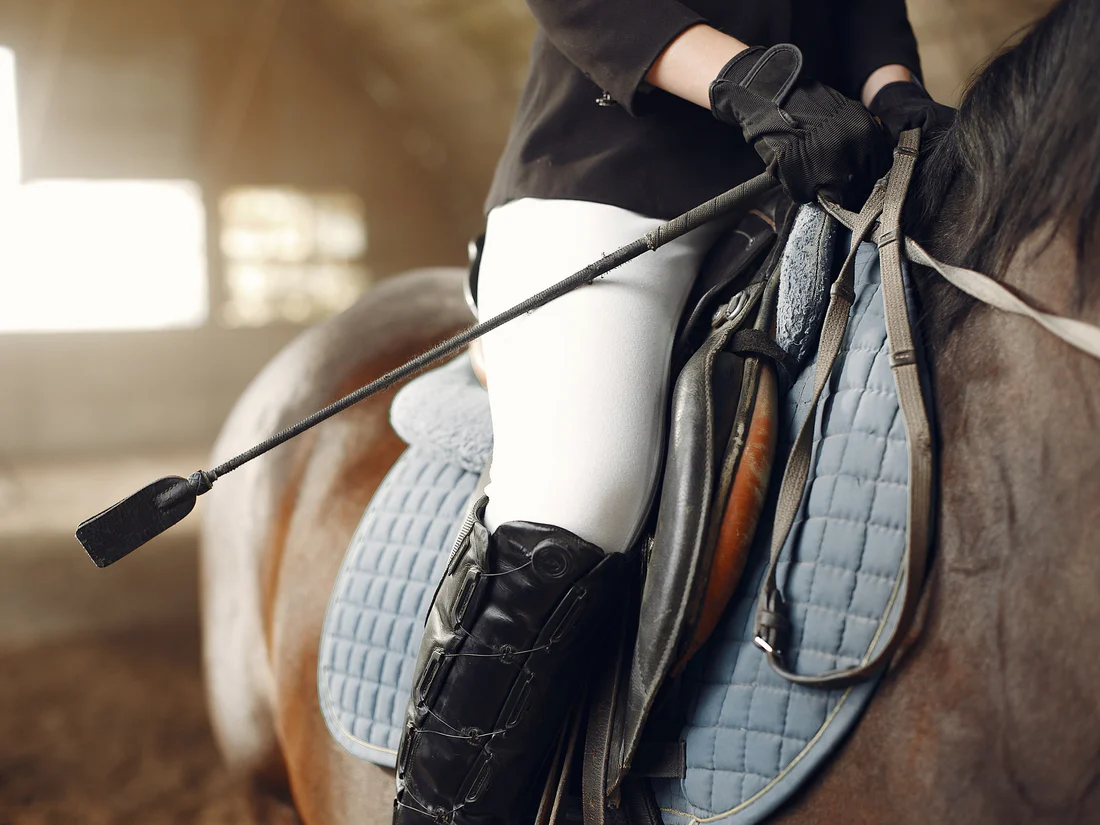When it comes to horseback riding, having the right tools can make all the difference. One such tool that often sparks curiosity and debate is the riding crop. This slender piece of equipment might look simple, but its history and application in equestrian sports are rich and varied. Whether you’re a seasoned rider or new to the saddle, understanding what a riding crop is and how it fits into your riding experience can elevate your skills while ensuring both you and your horse communicate effectively. Dive in as we explore everything you need to know about this essential piece of horseback riding gear!
History of Riding Crop
The riding crop has a rich history that dates back centuries. Originally, it emerged from the need for effective communication between horse and rider. Early versions were simple whips made of natural materials like sticks or branches.
By the 18th century, equestrian sports gained popularity among the upper classes in Europe. The riding crop became a symbol of sophistication and skill during this time. It was crafted more elaborately, often using leather and decorative elements.
In the 19th century, as horseback riding evolved into competitive events like show jumping and dressage, so did the design of crops. They became lighter yet sturdier to enhance control without causing harm.
Today’s riding crops reflect both tradition and innovation. Modern materials are used alongside classic designs to improve functionality while ensuring comfort for both horse and rider.
Types of Riding Crops
Proper Use and Care of a Riding Crop
Using a riding crop effectively requires finesse and understanding. Grip it lightly, allowing for precision rather than force. The goal is to communicate with your horse, not to punish.
When striking, aim for a gentle tap rather than a hard hit. This ensures the message is clear without causing distress. Timing matters; use the crop when necessary but avoid over-reliance on it.
After each ride, inspect your riding crop for any signs of wear or damage. Clean it regularly with a soft cloth to remove dirt and sweat that can accumulate during rides. Store it in a cool, dry place away from direct sunlight to maintain its integrity.
Remember, proper care extends its life and enhances performance during rides. Taking these steps will ensure you’re always ready for your next adventure in the saddle without compromise.
Common Misconceptions about Riding Crops
Many people associate riding crops with harsh discipline. This is a misconception that overlooks their true purpose. Riding crops serve primarily as communication tools between horse and rider.
Another myth is that using a riding crop indicates poor horsemanship. In reality, skilled riders often use them to reinforce cues or enhance guidance during training or competition.
Some believe that all riding crops are the same. There’s a wide variety of designs tailored for different disciplines, from dressage to jumping. Each type offers unique features suited for specific needs.
Some think riding crops promote aggression towards horses. When used correctly and humanely, they encourage responsiveness without inflicting pain. Understanding these nuances helps foster better relationships between riders and their equine partners.
Alternatives to Using a Riding Crop in Horseback Riding
While riding crops can be useful tools, there are several alternatives that riders might consider. Whips made from softer materials offer a gentler approach. These can provide guidance without the firmness of a traditional crop.
Another option is voice commands. Training your horse to respond to verbal cues fosters a stronger bond and enhances communication between rider and mount.
Using leg pressure is also effective. By adjusting your posture and using subtle shifts in weight, you can direct your horse with minimal intervention.
Additionally, schooling aids like side reins or lunge lines help develop responsiveness without relying on a crop during rides.
Engaging in groundwork builds trust and respect. Establishing yourself as a leader on the ground translates into better behavior under saddle too. Each alternative promotes harmony while supporting skill development for both horse and rider.
Conclusion: The Importance of Proper Equipment in Horseback Riding
Using the right equipment is vital in horseback riding. It enhances both safety and communication between horse and rider. A well-chosen riding crop can serve as an effective tool for guiding your horse, but it requires knowledge and skill to use properly.
Investing time in understanding how to select, care for, and utilize a riding crop makes a significant difference. The bond you build with your horse grows stronger when both of you understand each other clearly. Taking these steps ensures that every ride is enjoyable.
Choosing appropriate gear not only improves performance; it also fosters respect for the animal you’re working with. By prioritizing quality equipment, riders contribute to a safer environment where horses can thrive alongside their humans.
Embrace the journey of learning about tools like the riding crop, ensuring that each experience on horseback brings joy and harmony between you and your equine partner.
Riding crops come in various styles, each serving distinct purposes. The classic design features a long shaft with a flexible end, perfect for clear communication between rider and horse.
Dressage crops are typically shorter and more elegant. They encourage precise movements without being overly forceful. Their subtlety is ideal for competitive riding.
Jumping crops tend to be sturdier, promoting both guidance and motivation during courses. Riders often appreciate their durability when navigating obstacles.
Field crops have a wider head that helps signal horses over longer distances. They’re especially useful in the fast-paced environment of cross-country riding.
There are specialized options like the whip crop or racing crop designed explicitly for speed events. Each type has its unique strengths tailored to different disciplines within horseback riding. Choosing the right one can enhance your overall experience in the saddle.
How to Choose the Right Riding Crop for You
Choosing the right riding crop is essential for both comfort and effectiveness. Start by considering your height and reach. A longer crop may suit taller riders, while shorter individuals might prefer something more manageable.
Next, pay attention to the grip. Crops come with various handles—some are padded, others are not. Find one that feels good in your hand and provides a secure hold during rides.
Material matters too. Leather crops offer durability but can be heavier than synthetic options. Decide what fits your style of riding best.
Don’t forget about flexibility! Some crops have a stiffer shaft, which can provide more control, while others offer a bit of bend for softer communication with your horse.
Think about aesthetics. With different colors and designs available, choose a crop that matches your personality or riding gear to make you feel confident in the saddle.

















